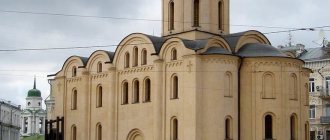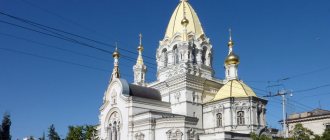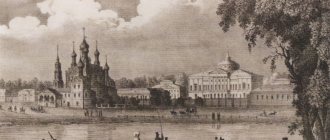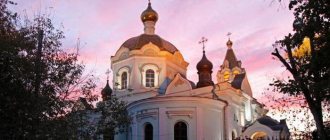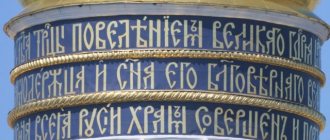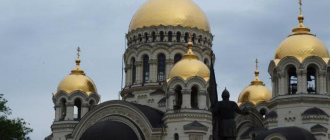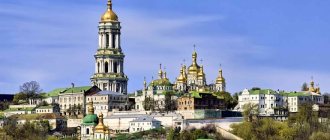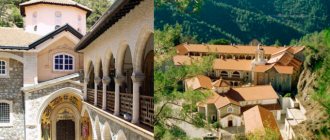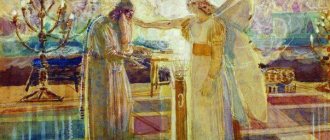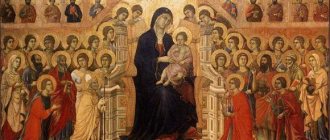Where endless fields stretched just a few hundred years ago, today stands an elegant red-stone temple, made in an intricate “Russian patterned” style. Today, in the area of the Ostankino TV tower, the bustling life of the Russian capital is in full swing. Anyone who happens to be nearby has the opportunity to admire the beautiful domes of the church in Ostankino, crowned with five onion-shaped domes. According to reviews, this temple looks incredibly beautiful and fits perfectly into the surrounding landscape.
Church of the Holy Trinity in Ostankino: introduction
It has been decorating the city for over three hundred years. The history of the Church of the Life-Giving Trinity in Ostankino is inseparable from the history of the Russian capital. This Orthodox church is the most important monument of cult Old Russian architecture, one of the culminating points in the development of the “Moscow patterned” style. The church in Ostankino belongs to the Russian Orthodox Church (Trinity Deanery of the Moscow Diocese). It is part of a complex of monuments representing the Ostankino museum-estate. The temple was founded by Vasily Yakovlevich Shchelkalov, an influential Duma clerk and statesman under Tsar John IV, in 1558. The date of first mention is 1584. The church was built in the period from 1677 to 1692.
Architecture of Trinity Cathedral
The main purpose of the construction of the cathedral, as conceived by Nikon, was to imprint the memory of Sergius. Therefore, the white-stone, golden-domed structure, built over the ashes of the founder of the Trinity Monastery, was completed sparing no expense, although without extreme extravagance.
Ornament on the apse of the Trinity Cathedral of the Holy Trinity Sergius Lavra.
Money for construction was not a problem, because the Trinity Lavra of St. Sergius was popular with many Moscow princes, who respected the memory of the saint and were ready to spend any money to perpetuate him.
A huge role was played by the Prince of Moscow Dmitry Donskoy, baptized, by the way, by Sergius of Radonezh himself, who in the future became the winner of the Battle of Kulikovo and the savior of the Russian land. Thus, considerable efforts were devoted to the construction of the cathedral.
The temple was built in the usual style of Moscow church architecture of those times, the end of the 14th - beginning of the 4th centuries, which was characterized by the absence of a vestibule and a large single-domed dome crowning the building.
At the same time, the temple has interesting architectural features that were not typical for this style: the division of the facades did not correspond to the temple space, the round drum with a dome-helmet crowning it is shifted towards the altar.
Although the entire building is structurally not very large, its walls are formed in this way (with all these curlicues, kokoshniks and other decorations), creating an external effect of scale and visually enlarging the cathedral. This applies to both the interior and exterior.
The inside of the building was painted by the best representatives of icon painting of those times: for example, the great icon painters Andrei Rublev and Daniil Cherny took part in the painting.
The history of the Trinity Cathedral of the Trinity-Sergius Monastery is closely connected with numerous reconstructions and external changes. This is due, first of all, to the extraordinary popularity of the temple among the country's top officials.
For example, in 1510, Prince Vasily III of Vladimir and Moscow, after a successful campaign against Pskov, ordered the roof of the cathedral to be covered with iron. And Tsar Ivan IV, during a prayer service after the capture of Kazan in 1552, ordered the dome to be gilded.
Over the next centuries, various chapels were added to the cathedral: a crypt, a refectory, and Nikon's chapel. Already in the 18th century, reconstruction was carried out again: the roof was replaced, the facades were repainted, and the interior design was also regularly changed. Thus, the temple constantly changed its appearance.
Description
The church building in Ostankino is notable for the fact that it is one of the buildings of the late seventeenth century, the facades of which are completely covered with decoration. The building belongs to the category of federal cultural heritage sites.
This authentic, primordially Russian temple has survived to this day practically without any changes from those very days three hundred years ago when, by order of the then owner of Ostankino, Prince Cherkassky, the first stone of the new church building was laid, replacing its wooden predecessor. It is known that the Sheremetev family of counts made a significant contribution to the development of the church in Ostankino. In the nineteenth century they were the owners of the estate.
Iconostasis of the Trinity Cathedral
The Trinity Cathedral iconostasis is a unique item of church historical heritage. Multi-tiered (five-tiered) iconostasis of exceptional historical value. The most valuable works placed in the iconostasis were created by masters under the leadership of Andrei Rublev and Danila Cherny.
The most important, famous and key work of Andrei Rublev, which is also indicated in chronicle sources, is the world famous icon “Trinity”. On it, the legendary icon painter stunningly embodies the image of the triune god. A number of researchers believe that Andrei’s authorship belongs to 2 to 5 works moved to the iconostasis.
These include displays:
- apostles Paul and Peter;
- Archangel Gabriel;
- Demetrius of Thessalonica from the Deisis series;
- as well as the “Baptism” icon.
Iconostasis of the Trinity Cathedral of the Trinity Sergius Monastery
It is believed that the icons of the apostles are closest to the “Trinity” in artistic style, therefore they are recognized as the main candidates for recognition of Rublev’s authorship. In total, the iconostasis of the Lavra contains seventy-four icons.
Since three icons of the Zvenigorod rank, attributed to Rublev, and Rublev’s works of the iconostasis of the Vladimir Assumption Cathedral are placed in the Tretyakov Gallery, the Holy Trinity Cathedral remains the only temple that preserves icons, if not of St. Andrew himself, then at least of his close circle, directly in the very temple.
Church in Ostankino (Moscow): architecture
According to art historians, the architectural style of this temple belongs to the Moscow pattern. In the external decoration of the church, attention is drawn to the abundance of decorative elements, as well as the general intricacy and complexity of the composition. The facade of the temple is completely covered with patterned tiles.
In terms of the church's plan, its unconventionality is also no less interesting: the complete absence of a refectory, the self-sufficiency of the church aisles, internally separated from the main building by partitions and looking like separate buildings. The design of the temple is represented by a pillarless quadrangle, typical of its time, installed on a fairly high basement, on the sides of which there are identical chapels. There is a walkway on three sides of the temple. With all this originality, the overall composition of the structure is strictly symmetrical. The church porch is covered with a richly decorated tent, the sight of which evokes an association with Yaroslavl patterned architecture.
The real highlight of the interior decoration of the church is its nine-tiered iconostasis, decorated with carved gilded decor depicting twisted grape vines. An unexpected allusion is that its shape resembles an organ, unthinkable in an Orthodox church, but an obligatory participant in all Catholic services. Many Moscow experts call the author of the stone church project the serf architect Pavel Sidorovich Potekhin, whose owner was Prince Cherkassky's father-in-law, Yakov Odoevsky.
History of Trinity Cathedral
Immediately after the founding of the Trinity Lavra, a small wooden church was erected on its territory, consecrated in 1340 in honor of the Holy Trinity. After this, the laurel quietly lives out its life until the beginning of the next century - and this is more than sixty years. During this time, the founder himself, St. Sergius, manages to die. This happens on the twenty-fifth of September 1392.
In 1408, a most important historical event occurred that determined the fate of the monastery: Tatar troops invaded the monastery, it was plundered and desecrated, and finally burned, by the Horde prisoner Edygei.
Most of the internal buildings, including the wooden church, were lost forever.
Despite this, the disciple and successor of Sergius of Radonezh, St. Nikon, is building the church anew.
So on September twenty-fifth, 1411, a new wooden temple was consecrated.
But the turning point was that during the construction of the church the relics of St. Sergius were found, which served as the idea for the construction of a real white-stone cathedral that would perpetuate the memory of the founder of the Trinity Monastery, who was very revered by the Moscow princes in those years. The latter pledged funds for the construction of the temple.
It began in 1422, and was completely finished in 1425. Compared to other churches in the internal ensemble of the Trinity Lavra of St. Sergius, this construction does not seem large and looks somewhat squat. Contemporaries also noted that the temple was not very tall.
Today it is difficult to say whether the decision to build such a compact structure was forced, or whether it was the personal will of St. Nikon. However, everyone who visited the cathedral, one way or another, noted the cramped interior decoration.
However, there is nothing so unusual about this: in those days, the construction of large stone churches was not particularly common at all, and the dimensions of the temple itself reached only 9 fathoms (19.2 m) in length (including the altar) and 6 fathoms (12.8 m) in width.
From the very beginning, Nikon intended to decorate the walls of the church with picturesque portraits and icons. Famous creators of those times - the monks of the Moscow Andronnikov Monastery, which, one might say, was a branch of the Trinity Church, also built by St. Nikon - undertook to paint the interior decoration of the building.
Modern research confirms that both of these great artists and icon painters participated in the creation of the iconostasis, and also attracted artists from their own circles to work; But today it is almost impossible to find out the exact origin of ancient icons.
The only thing that is known for sure is that the famous Trinity icon was 100% painted by Andrei Rublev. This icon is the main shrine of the monastery.
The October Revolution became another tragic historical phenomenon that interfered with the everyday life of the Trinity Lavra, although compared to the Tatar invasion the scale of destruction was not so large-scale.
In 1920, the Soviet government closed the cathedral, St. Sergius' shrine was opened, and the relics were removed and exposed for all to see. Historical evidence suggests that believers venerated the remains, turning their gaze away from the “nakedness” (uncovered relics).
At the same time, at the turn of the 20s-30s, there was an immediate threat of complete destruction of the holy relics, which at that time were transferred to the Moscow and Sergiev Posad museums. Anti-religious organizations, conducting ideological propaganda, threatened to cremate the sacred remains. Fortunately, the barbarity was not carried out.
After the war, the rebirth of the Trinity Cathedral began: a large-scale reconstruction was carried out, serious restoration work was carried out to restore the original appearance of the cathedral, lost during the war. The reconstruction was completed in the 60s.
And at the turn of the century, the Patriarchal Architectural and Restoration Center, created on the territory of the monastery, began to transform and improve the areas surrounding the temple. At the same time, in the cathedral itself, the facades were whitened, the roof of the quadrangle and apses was returned to normal, the gilding was restored, and much more.
About the history of the construction of the temple
The wooden Church of the Life-Giving Trinity in Ostankino was built back in 1617; by the end of the seventeenth century it was replaced by a stone one, which became a house church for the owners of the estate, the princes of Cherkassy. At the same time, a 9-tiered gilded carved iconostasis was erected. The new stone church had three chapels: the main one - in the name of the Life-Giving Trinity; the northern one - built in honor of the Tikhvin image of the Mother of God, and the southern one - dedicated to Saint Alexander of Svirsky. It is known that on the eve of his coronation, the future Emperor Alexander II prayed in this church.
In the twentieth century, like all other Russian churches, the Church of the Life-Giving Trinity in Ostankino gradually fell into decay. In 1919, the believers were moved from the upper part to the basement, which became the fourth chapel dedicated to St. Nicholas. In 1922, the frames for the iconostasis and all the icons were removed from the church - in total over sixty kilograms of silver.
In 1930, the temple building was transferred to the Anti-Religious Museum of Art and the Financial Department of the Dzerzhinsky District of Moscow. The lower aisle was used as a warehouse for storing potatoes. With the beginning of the war of 1941-1945. the temple was completely converted into a warehouse. The 1970s saw a slow but steady revival. First, the iconostasis was restored, the façade and roof were repaired. In the 80s of the twentieth century, early music concerts were still held in the church building. In the spring of 1991, the main altar of the temple was consecrated again. Over the course of five years after this event, all three upper aisles were restored and consecrated.
Currently, the church has again become four-altared: the lower chapel, used as a baptismal chapel, is consecrated in the name of St. Nicholas the Wonderworker. The rector of the temple is Metropolitan Sergius of Southeast Asia and Singapore (Nikolai Nikolaevich Chashin).
Russian Orthodox Church
Story
The Abode of the Life-Giving Trinity was founded by St. Sergius of Radonezh in 1337 on Makovets Hill, 70 km northeast of Moscow.
For centuries, the Trinity-Sergius Lavra has been one of the most revered all-Russian shrines, the largest center of spiritual enlightenment and culture. Within its walls a host of ascetics of the Russian Orthodox Church labored, including St. Nikon of Radonezh, St. Maxim the Greek, spiritual writers St. Epiphanius the Wise and Pachomius Logothetes. The Holy Archimandrites of the Lavra were the Moscow Saints Philaret (Drozdov; †1867) and Innocent (Veniaminov; †1879), as well as Sschmch. Vladimir (Epiphany; †1918).
For centuries, a unique library of handwritten and early printed books has been collected in the Lavra. Hundreds of Russian monasteries were founded and spiritually equipped by the monasteries of the Lavra. In 1608-10 the monastery withstood the siege of thirty thousand troops of Polish-Lithuanian invaders (there were about three thousand besieged in the monastery itself).
Since 1688 the monastery has been stauropegial. In 1744 the monastery received the status of a Lavra.
Since 1814, the Moscow Theological Academy, the oldest higher educational institution in Russia, founded in 1685 in Moscow, has been located on the territory of the Lavra. Transferred to the Lavra after the fire of 1812, the academy was located in the former Royal palaces of the 17th century.
In 1920, the Lavra was closed, its buildings housed the Historical and Art Museum and other institutions, and some of the buildings were occupied for housing. The revival of the monastery began in 1946. In 1949, the Moscow Theological Academy resumed its activities within the walls of the Lavra. In 1971, 1988, 1990 Local Councils were held in the Trinity-Sergius Monastery.
In 1993, the architectural ensemble of the Lavra was included in the List of UNESCO World Heritage Sites in Russia.
Temples and chapels
- Trinity Cathedral (1422-23), in which the holy relics of St. Sergius of Radonezh; in the iconostasis of the temple there are icons of letters to St. Andrey Rublev;
- Assumption Cathedral (1559-85, built by order of Tsar Ivan the Terrible);
- Temple of the Descent of the Holy Spirit on the Apostles (1476-77);
- temple of St. Nikon of Radonezh (1623);
- gate church in honor of the Nativity of St. John the Baptist (1693-99);
- temple of St. Zosima and Savvaty Solovetsky at the Hospital Wards (1635-37);
- temple of St. Sergius of Radonezh with the refectory (1686-92);
- Church of the Smolensk Icon of the Mother of God (1746-53);
- temple in honor of the appearance of the Mother of God St. Sergius (Micheevskaya Church) (1734);
- Church in honor of the Intercession of the Mother of God (at the academy);
- temple in honor of St. John Climacus (in the seminary);
- Assumption Chapel above the treasure trove (1644 - late 17th century).
Metochions and monasteries
- the courtyard of the Trinity-Sergius Lavra in Moscow, the Church of the Life-Giving Trinity in Trinity Sloboda and the Church of St. Sergius in the Sergievsky courtyard;
- Church of St. App. Peter and Paul (Sergiev Posad);
- Pyatnitskoe courtyard on Podol, a temple in honor of St. mts. Paraskeva Pyatnitsa, located on the south-eastern side of the Lavra;
- Church of the Transfiguration of the Lord in the village. Radonezh, Moscow region;
- Trinity Compound in St. Petersburg;
- Varnitskoe courtyard in Rostov the Great;
- temple in honor of St. Mary Magdalene in Sergiev Posad;
- temple in honor of the appearance of the Mother of God St. Sergius of Radonezh on the territory of the Federal State Budgetary Institution “Sergiev Posad Boarding House for the Deaf-Blind for Children and Young Disabled People” of the Ministry of Labor and Social Protection of the Russian Federation (Sergiev Posad);
- All Saints Compound in Sergiev Posad;
- Vladimir Compound (Vladimir region, Tuchkovo village);
- Pokrovsky Skete (Moscow region, Saburovo village);
- Blagoveshchenskoye Compound (Moscow region, Blagoveshchensk village);
- Bogorodskoye Compound (Moscow region, Bogorodskoye village);
- Deulinsky courtyard, Church of the Savior Not Made by Hands in the village. Deulino, Moscow region;
- Peresvetskoe courtyard in the city of Peresvet, Moscow region;
- farmstead "Kulikovo Field" (Tula region, village of Ivanovo);
- Spaso-Vifanskoye Compound (Sergiev Posad);
- Chernigov monastery (Sergiev Posad);
- monastery Paraklit (Sergiev Posad);
- Church of the Korsun Icon of the Mother of God (village of Glinkovo, Sergiev Posad district, Moscow region; the courtyard was opened by Patriarchal decree of August 16, 2022).
Shrines
Crayfish with the relics of St. Sergius of Radonezh and Nikon of Radonezh (Trinity Cathedral); St. Maximus the Greek and St. Anthony of Radonezh (Church of the Descent of the Holy Spirit); St. Joasaph, Metropolitan of Moscow, St. Dionysius of Radonezh and St. Serapion, Archbishop of Novgorod, particles of the relics of St. Nicholas the Wonderworker, First Martyr Archdeacon Stephen, Great Martyr. Panteleimon, part of the belt of the Blessed Virgin Mary and other shrines (Serapion Chamber); Tikhvin and Chernigov icons of the Mother of God (Trinity Cathedral), icon of St. Nicholas (in the Church of St. Sergius), etc.
Divine service
Morning worship daily starting at 5.30. Evening worship at 16.45 on weekdays, on Sundays and holidays at 17.00.
Viceroys
- from November 30, 1988 to February 26, 2022 - Archbishop of Sergiev Posad Feognost
- from February 26, 2022 to August 25, 2022 - Bishop of Sergiev Posad Paramon
- from August 25, 2022 - Bishop Thomas of Sergiev Posad and Dmitrov
About the activities of the parish
Today the life of the community is concentrated around the following areas of activity:
- Children's Sunday school (training starts at age 5).
- Sunday school for adults.
- Youth Center.
- Children's press center and television studio.
- A social service that provides support to people with disabilities, as well as the poor and orphans of the Moscow region.
About divine services
Today you can attend daily services in the church in Ostankino according to the schedule:
- at 8:00 there are prayer services, then the Liturgy;
- 16:45 - the beginning of the evening service, in accordance with the church calendar.
On holidays and Sundays the Liturgy is served twice:
- the beginning of the early Divine Liturgy is at 6:30, then the time comes for the holy prayer service;
- the late Liturgy is served - from 9:40, then a memorial service is held;
- In addition, on Sundays at 17:00 akathists are read.
Shrines of the Trinity Cathedral
The Trinity Cathedral of the Trinity of Sergius Monastery remains home to a number of Orthodox shrines. Among them are the relics of Sergius of Radonezh, the prayer hall is decorated with a colossal copper chandelier of the 15th century, and a steel bishop’s chair of the 18th century is kept in the Altar.
About the relics, it should be said that at first they were placed in a modest wooden shrine. However, when problems arose with the wooden material, in the 16th century, the production of a large, heavy silver shrine began. And in the 19th century, a lid was built for it.
The gilded copper chandelier decorating the temple space was donated to the temple by Ivan IV. The chandelier is richly decorated with images of the Virgin Mary, apostles and angels
Another shrine of the temple appeared in the 18th century: Metropolitan Platon was given a gilded steel chair made by Tula craftsmen on a special order. The chair was transferred to the temple and remains here to this day as a shrine.
